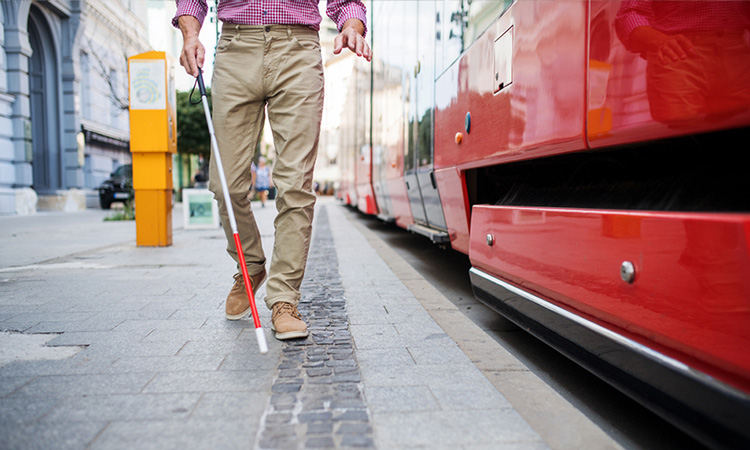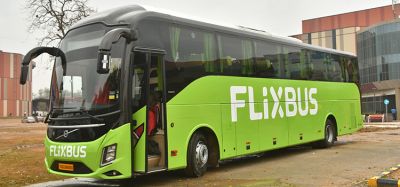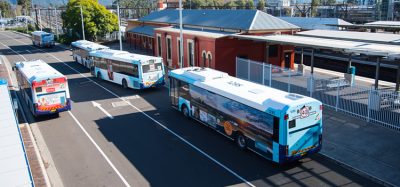RNIB report calls for improved accessibility on public transport for people with sight loss
- Like
- Digg
- Del
- Tumblr
- VKontakte
- Buffer
- Love This
- Odnoklassniki
- Meneame
- Blogger
- Amazon
- Yahoo Mail
- Gmail
- AOL
- Newsvine
- HackerNews
- Evernote
- MySpace
- Mail.ru
- Viadeo
- Line
- Comments
- Yummly
- SMS
- Viber
- Telegram
- Subscribe
- Skype
- Facebook Messenger
- Kakao
- LiveJournal
- Yammer
- Edgar
- Fintel
- Mix
- Instapaper
- Copy Link
Posted: 18 April 2023 | Intelligent Transport | No comments yet
RNIB’s report reveals the extent of accessibility barriers faced by blind and partially sighted people on public transport, prompting calls for transport providers to adopt a checklist of best practice for more inclusive journeys.


A new report from the Royal National Institute of Blind People (RNIB) highlights the daunting experience that blind and partially sighted people face when using public transport due to a wide breadth of accessibility issues which reduce their ability to travel independently.
Thus, RNIB is calling for transport providers to use a checklist to make their services more accessible to enable blind and partially sighted people to travel independently and live a fulfilled life. RNIB’s key recommendations detail how public spaces and transport hubs can incorporate best practice in design to improve accessibility.
According to the report, the availability and consistency of physical, visual and audio design features and services across transport modes and regions vary greatly and are especially poor in rural areas. This includes tactile paving, detectible curbs, handrails, lifts, clear routes, step-free access, clear signage and markings with colour contrast, as well as accurate, frequent and clear audio announcements on buses and trains.
In addition, new findings from the report show that over half of people with sight loss find it difficult to navigate public transport facilities, while over three quarters of blind and partially sighted people feel nervous about travelling to unfamiliar places, and while most feel safe, nearly one in five do not.
Wolverhampton Bus Station trials innovative technology to enhance accessibility
Furthermore, while passenger assistance schemes are highly praised, they are not available on buses, and nearly a quarter of people with sight loss rely on family and friends for support. Planning unfamiliar journeys is difficult for over half of those with sight loss, and technology is not widely used on public transport. Although most public transport staff have been described as friendly and helpful, a small proportion of people with sight loss (around one in 10) have reported negative experiences.
The research, funded by the charity Motability identifies the unique challenges of journeys that are made by people with sight loss and how the solutions to these barriers can deliver a greater sense of independence, and an improved public transport service for all.
“We know that not being able to get out and about independently has a huge impact on the lives of blind and partially sighted people, from limiting their employment prospects to isolating them from friends,” said Vivienne Francis, RNIB Chief Social Change Officer. “We have now used the insights we gained to create a checklist of best practice, and the often simple changes people can make to make journeys more inclusive. We are calling for all transport providers to work with us to create a transport infrastructure that works better for everyone.”
The report also highlighted how technology, such as smartphones and travel apps, can be a great enabler to increase independence for blind and partially sighted people when using public transport. Accessing maps, checking timetables, confirming walking routes at and between stations and information about accessibility can be a real help in supporting people with sight loss to travel more confidently.
If you liked this, you may also be interested in:
▶ New initiative boosts public transport access for people with hidden disabilities in Wales
▶ Neuron’s e-scooters expand urban accessibility for riders with disabilities
Related topics
Passenger Accessibility, Passenger Experience, Public Transport
Related modes
Bus & Coach, Train
Related countries
United Kingdom
Related organisations
Royal National Institute of Blind People (RNIB)
Related people
Vivienne Francis








